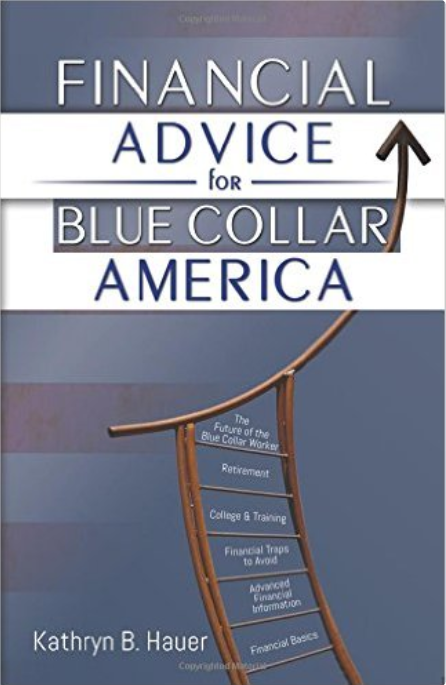 I recently had an opportunity to read Financial Advice for Blue Collar America by Kathryn B. Hauer. The book is positioned as a practical guide for the average American who needs to get straight to the important topics, and the it definitely delivers on that promise.
I recently had an opportunity to read Financial Advice for Blue Collar America by Kathryn B. Hauer. The book is positioned as a practical guide for the average American who needs to get straight to the important topics, and the it definitely delivers on that promise.
The book starts out with the premise that being a blue collar worker actually CAN offer you an opportunity to gather wealth. Blue collar as used in this book means a job which doesn’t require a college degree, but requires a certain level of skill and training. This includes trades like carpenters, truck drivers, auto technicians, police, and skilled manufacturing workers. A sampling of current annual earnings for these jobs ranges from $40,000 to $82,000, which might be surprising to some.
Early on we learn about basic financial concepts such as net worth and cash flow, which are explained well. Also included are information on debt, budgets, saving, investing, the many types of insurance, taxes, and wills. These topics are covered briefly, but there is enough information for it to be valuable.
An entire chapter is devoted to investing, and this is important as well because there are so many things to understand about the different types of investments, how investment advisors work, and how to figure out whether you’re making money on your investments.
My favorite chapter by far focuses on avoiding financial traps. What do you do when you need money fast? What if you have to borrow money? How do you avoid fraud and scams? (Full disclosure: I’m quoted in this section.) How do you find a good financial professional?
Next we move into comparing and contrasting careers requiring college degrees versus blue collar careers. This should be required reading for all high school students and their parents. It is one of the most comprehensive discussions I’ve seen of the pros and cons of both, touching on compensation, work hours, length of career, societal perceptions, costs of education and training, and paying for college.
The chapter on retirement planning is very useful, discussing various streams of cash during retirement. A chart comparing 401(k)s, traditional IRAs, and Roth IRAs is particularly helpful. It summarizes the important things in one place, including contribution limits, withdrawals, and taxes.
The book ends with a chapter on the future of blue collar work. Despite some of the negative perceptions of blue collar work, there are so many advantages to it. Much of the training is paid for by employers and the jobs can be very lucrative.
This book is a valuable resource for the average person who needs to get a handle on the most important aspects of their his or her personal financial life. More in-depth information can be found elsewhere if needed, but this book does a thorough job of covering a multitude of topics. It’s an easy read and organized well. Two thumbs up!



